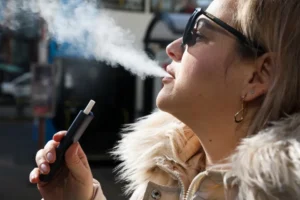Tax policies on vapes and traditional cigarettes vary significantly across countries, reflecting different priorities in public health, fiscal revenue, and economic development. Below is a comparison of major countries’ approaches to taxing these products.
1. Tax Policies on Traditional Cigarettes
2. Tax Policies on Vapes
- United States
In the U.S., traditional cigarette taxation includes federal and state taxes, with significant variation between states. For example, New York imposes higher cigarette taxes, while southern states often have lower rates. Additionally, minimum price regulations aim to curb the sale of low-cost cigarettes. - European Countries
The EU mandates minimum excise tax levels, but member states can adjust rates. Countries like the UK and France impose high taxes on traditional cigarettes to reduce smoking rates and increase fiscal revenue. - China
As the world’s largest cigarette market, China taxes traditional cigarettes primarily through excise and value-added taxes (VAT). Although the rates are lower compared to Western countries, cigarette taxes contribute significantly to national revenue.
- United States
Tax policies on vapes in the U.S. vary by state. Some states tax based on nicotine content, while others tax retail prices or liquid volume. At the federal level, vape taxation remains relatively lenient. - European Countries
European countries are cautious but increasingly strict with vape taxation. For example, Italy and Finland impose high taxes on vape liquids, while Germany maintains lower rates to encourage the shift from traditional cigarettes to vapes, reducing health risks. - China
China was relatively late in introducing tax policies for vapes. However, starting in 2022, the government began levying excise taxes on vape liquids based on retail prices, marking a move towards standardized regulation of the industry.
3. Motivations Behind Tax Policies
- Public Health Considerations
High taxes on traditional cigarettes aim to curb consumption, reduce smoking rates, and mitigate health risks. Vape tax policies, however, are more contentious: high tax rates could hinder their role as a less harmful alternative to cigarettes, while low tax rates might encourage misuse among young people. - Fiscal Revenue Needs
Traditional cigarettes have historically been a significant source of government revenue. As the vape market rapidly expands, it has become a new target for taxation.
- Balancing Economic Interests
Some countries strive to balance economic growth with public health. For example, they promote the vape industry while ensuring it does not create new health burdens.
4. International Trends and Challenges
As health awareness grows and tobacco alternatives become more widespread, countries are likely to:
- Increase taxes on traditional cigarettes;
- Introduce stricter tax and regulatory policies for vapes;
- Use tax policies to encourage consumers to shift towards less harmful products.
In conclusion, the taxation of vapes and traditional cigarettes reflects a delicate balance between public health and fiscal priorities. As global policies evolve, understanding these approaches is crucial for shaping healthier and more sustainable consumption habits.
Our innovative vape products from SENCOI are designed to align with evolving global trends, offering a modern alternative for responsible and enjoyable consumption.













